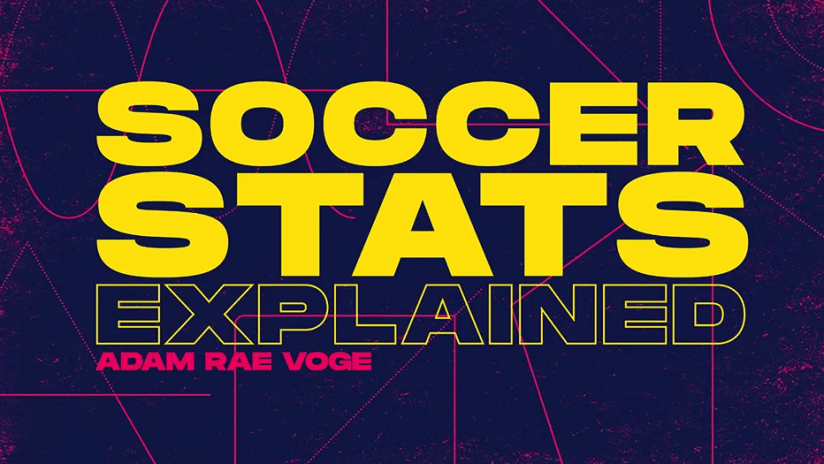Written by Adam Rae Voge | Soccer Writer & Data Analyst
Soccer is a sport that’s built on chances. It’s certainly possible to win a game by scoring on your only chance of the game and saving your opponent’s several chances, but the odds favor the club that makes the most chances over the long run.
It makes sense, then, that controlling the ball is pivotal. And when you do lose the ball, getting it back is crucial.
Admittedly, there are multiple ways to defend your opponent. Some clubs may opt to play further off the ball and cut off passing lanes while maintaining a disciplined shape. But by and large, many modern clubs use an active press to win the ball back as quickly as possible and, often, launch a counterattack as a result.
So, what’s a good way to tell whether your club is pressing effectively? Certainly, cut-and-dried results are a good place to start. Another one: Pressures and Successful pressures.
Breaking down successful pressures
Pressing in soccer has one really simple goal: Force your opponent to turn the ball over. That doesn’t always mean taking the ball directly from your opponent’s feet with a tackle, though. Sometimes the act of limiting the ball carrier’s space or passing options will force a bad decision, creating a turnover or a series of events that leads to the loss of possession.
For those times when a player’s pressure on the ball carrier indirectly creates those turnovers, there’s the successful pressure statistic. FBRef, an in-depth soccer stats website available for free, defines a successful pressure as a time your team gains possession of the ball within five seconds of you having applied pressure. Perhaps you steered a dribbler into a teammate, who made a tackle or forced an errant pass that was intercepted. In either case, you’d be credited with a successful pressure.
Are successful pressures directly linked to club success? Yes and no. The concept of the gegenpress, in which a team presses in order to gain back possession quickly after losing the ball, has become increasingly popular of late thanks to the success of several German managers, including the inventor and current Manchester United manager Ralf Rangnick and Liverpool manager Jurgen Klopp. Rangnick and current St. Louis City SC sporting director Lutz Pfannenstiel both worked for German club 1899 Hoffenheim in the 2000s.
A look at the English Premier League, the most prominent domestic soccer league in the world, shows Chelsea, Manchester City, and Liverpool rank in three of the top four places in terms of how often their press is successful. The bottom four in successful pressures by percentage – Burnley, Aston Villa, Norwich City, and Newcastle United – form three of the bottom four in the league standings.
But there are also other ways to measure successful ball pressure. Sticking with FBRef, you can look at which area of the field teams are most often applying pressure. Most statisticians will divide the field into thirds for measurement purposes – the attacking third, the middle third, and the defensive third, which are relatively self-explanatory.
Teams pressing most in the attacking third – which is this season’s MLS included the NY Red Bulls, LAFC, Sporting KC, and Minnesota United, three of whom were MLS Cup qualifiers – could be considered the most aggressive at pressing. Others, such as the Portland Timbers, will apply more pressure in the final defensive third of the pitch. Portland led the MLS in pressures in the defensive third but were about average in terms of total ball pressure, largely because they very rarely applied pressure further up the field.
- Portland’s lack of ball pressure resulted in opponents taking the fourth-most shots against the Timbers of any other team in the league (none of the other three above them made the MLS Cup). The Timbers’ opponents racked up 58.3 xG – you may recall from our discussion of Expected Goals (xG) that it’s a measure of how likely a shot was to be a goal.
Whether it was because of their defensive effectiveness, or pure luck, the Timbers only allowed 51 actual goals. That 7.3-goal gap between xG and actual goals was the fifth-most-favorable in the MLS this past season, and yes, the four clubs ahead of them did also make the Cup.
Portland was also helped quite a bit by their high-powered attack, which netted 56 goals this season, tied for third-most in the league. Perhaps the best defense really is a good offense?
If you’re looking for other ways to measure ball pressure, many soccer analysts will also use a statistic called Passes Per Defensive Action (PPDA). That metric measures the number of times your opponent is allowed to pass the ball before your team makes a defensive action. This can include a tackle, an interception, an attempted (missed) tackle, a foul, and more. An aggressive defensive team will have a PPDA in the high single digits, meaning their opponents tend to make eight or nine passes before a defensive event disrupts their passing. A poorer PPDA can range anywhere from 15 to 18 passes before applying pressure.
PPDA is a great way to measure the aggressiveness of a defense, but one drawback to the statistic is that it tends to be available as part of paid subscription sites such as Wyscout and Opta. You can, of course, always attempt to calculate your own version of PPDA by dividing your opponent’s passes by the number of tackles, attempted tackles, fouls, and interceptions recorded by your team.
As is the case with many things, there’s no one answer as to why that xG number would have been so low. Defensive discipline forcing opponents into forced or rushed shots will contribute to that. So could dumb luck. Determining how much of each is a factor is up to the beholder.


